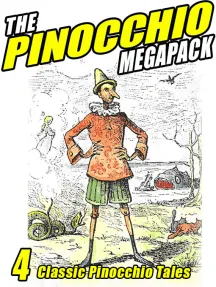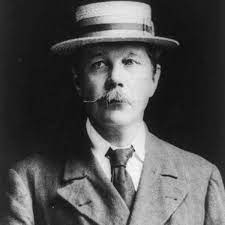
Since it was first written in the early 1880s, Italian author Carlo Collodi’s The Adventures of Pinocchio has remained one of the most universally recognisable works of Italian literature. Let’s look at what has made this classic endure the test of time.
Between the Covers is a weekly column that introduces young readers to the world of literary classics. It focusses on one celebrated book each week and finds out what makes.
About the Author
Carlo Lorenzini was born November 24, 1826, in Florence, Tuscany. Both of his parents worked for the marchese (Italian nobleman) Ginori Lisci His mother Angiolina Orzali Lorenzini was a seamstress and his father Domenico Lorenzini was a cook. Carlo was the eldest of his 10 siblings and spent most of his childhood with his maternal grandmother in Collodi. At the age of 30, the Italian author and journalist adopted the pseudonym Carlo Collodi, after his beloved mothers hometown near Pistoia in Tuscany.
Today he is best known as the creative mind behind The Adventures of Pinocchio, a classic tale of a marionette child brought to life. This puppet is known for his long nose, which (only) on one occasion in the novel although more frequently in other adaptations) grows when he lies.
Pinocchio’s story was first published in 1881 in a serialised format in Giornale Dei Bambini (Italian for children’s magazine) before it was published as a novel in 1883. Collodi’s masterpiece is held as one of Italy’s literary national treasures and is credited with being one of the most iconic works of children’s literature of all time, inspiring plays, movies, and hundreds of new editions making the titular puppet one of the most reprinted characters in the pantheon of children’s literature. With its slapstick humour and instructive themes, The Adventures of Pinocchio was a turning point in Italian literature and commented on the pathetic conditions of the lower working class at the time, through the character of Geppetto. However, Disney’s 1940 adaptation of the Italian classic, critics say, censors, sugar coats, and trivialises Collodi’s original tale to present a very Americanised and domesticated version of Pinocchio’s story as “a paean to impossibly idealised childhood”.
Once upon a time…
A marionette called Pinocchio comes to life because it was carved out of a piece of enchanted wood by a carpenter named Geppetto. The life-affirming story chronicles the adventures of the titular character and elaborates how our hero rises above different kinds of temptations (such as leading a life of leisure in the land of toys) to become human.
What makes it a classic?
Transformation
This story shows how things can very quickly go from bad to worse, but also from terrible to wonderful through acts of kindness and how sometimes this much-needed kindness can come from strangers. In the story, we witness how Pinocchio (like most kids) suffers and learns from the compulsive habit or the insatiable need to do something he had been told not to do over and over again. The protagonists’ behaviour and inspiring journey from ignorance to knowledge is very relatable and helps us as readers redefine how we perceive the pitfalls of life.
The lure of temptations
The story has an eerie quality and a folklore-like nature. The authors use of the ideas of rebirth, ghosts, and fairies along with manipulative characters such as the fox, the cat, and the giant serpent demonstrates the power of temptations. Crafting a children’s story while talking about the base reality of existence through complex themes such as poverty, the difference between good and evil, child abuse, and the role of one’s conscience, Collodi emphasises how the difference between adult and children’s literature was quite an alien idea in Italian literary tradition at the time.
What is it to be human?
Pinocchio’s story brilliantly exemplifies the multiplicity of meaning in the written word as it tries to answer the intriguing question: What is it to be human?
Through this straightforward narrative, which is deceptively simple but truly complex, Collodi seems to suggest that being human is to expose oneself to the good, bad, and ugly realities of the world and gain wisdom through experience. Pinocchio becomes human when he is able to think freely and also weigh the consequences of his actions.
The relationship with the conscience
Clinical psychologist Dr. Jordan B Peterson says that the learning relationship that Pinocchio shares with the cricket (which stands in as a personification of the puppet’s conscience) demystifies the widely accepted idea of an omniscient or all-knowing conscience that can guide one to redemption, to suggest that in life, you and your conscience mature together through critically thinking and learning from the ebb and flow of life. This kind of growth is an indispensable part of our journey on this planet.
Picture Credit : Google



